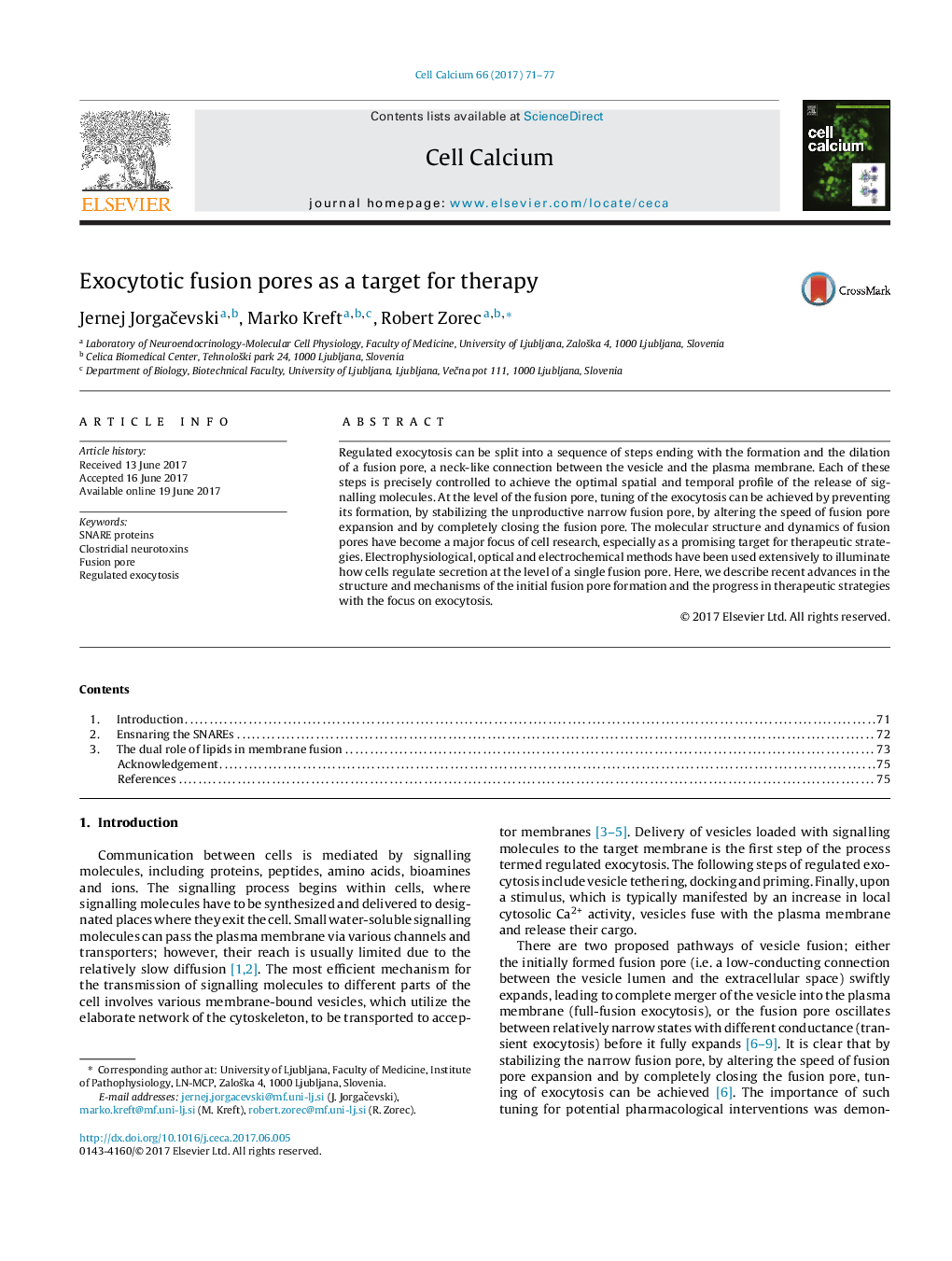| Article ID | Journal | Published Year | Pages | File Type |
|---|---|---|---|---|
| 5530543 | Cell Calcium | 2017 | 7 Pages |
â¢Tuning of the exocytosis can be achieved at the level of the fusion pore.â¢SNARE proteins are involved in forming and expanding fusion pores.â¢Lipids and their analogs are surprisingly versatile components in vesicular fusion.
Regulated exocytosis can be split into a sequence of steps ending with the formation and the dilation of a fusion pore, a neck-like connection between the vesicle and the plasma membrane. Each of these steps is precisely controlled to achieve the optimal spatial and temporal profile of the release of signalling molecules. At the level of the fusion pore, tuning of the exocytosis can be achieved by preventing its formation, by stabilizing the unproductive narrow fusion pore, by altering the speed of fusion pore expansion and by completely closing the fusion pore. The molecular structure and dynamics of fusion pores have become a major focus of cell research, especially as a promising target for therapeutic strategies. Electrophysiological, optical and electrochemical methods have been used extensively to illuminate how cells regulate secretion at the level of a single fusion pore. Here, we describe recent advances in the structure and mechanisms of the initial fusion pore formation and the progress in therapeutic strategies with the focus on exocytosis.
Graphical abstractDownload high-res image (142KB)Download full-size image
